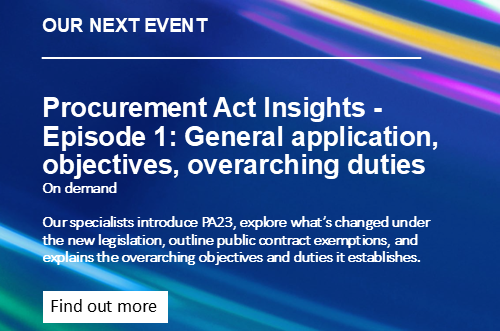- Details
Business Cases and Financial Modelling for Solar PV Projects
Steve Gummer discusses the upcoming focuses of his 'Green Steves' programme, the first of which is solar energy.
Introduction
This year under the Green Steves programme we are going to focus on two key areas, the first of which is solar energy. The intention is to focus on solar PV projects and take a deeper dive into the issues involved and how to steer a successful project through delivery. As the energy crisis last year bit deeper, many more local authorities looked at the potential for solar and these papers are intended to assist them in formulating plans and driving them forwards.
So far we have looked at Government policy and strategy at the local authority level. Following those high level areas, we moved into the detail of projects, covering solar farms and then buildings projects.
This fifth paper in the series looks at another vital area of solar PV development, namely the business case and financial modelling. This is crucial to the overall process in the simple fact that Members and senior management will not support any project that is not underpinned by a robust business case.

Business Cases and Financial Modelling
The business case and financial case are separate documents. The former is the rationale for undertaking the project and is used to generate support for the project; the latter is the nitty gritty of income and expenditure and calculates the rate of return on capital invested.
Both are complex areas but it is the latter that will be focussed on in this paper. The reason for this is that most local authority officers will be relatively comfortable with writing a business case explaining why the Council is undertaking the project, how it fits with Government policy, how it relates to the Council’s own plans and strategies and what the wider benefits of it will be.
The financial case will be more challenging and will be likely to be outside both the comfort zone of most local authority employees and requiring detailed industry knowledge to complete successfully.

The Financial Case
This is the ‘nitty gritty’ of the finances underpinning the arrangements. How much will the scheme cost? How much will it make? There are many questions to be answered. The financial case is the blueprint for the planning, building and operation of the facility, and so needs to be both detailed and precise in its calculations. They are certain to scrutinised widely, both inside and outside the authority.
The financial case will have a number of different sections:
The Preliminaries in the Financial Case
The basic information about the development has to be set out in the first section of the financial case.
This would include:
- The title of the project, for example the Wike Ridge Solar Farm
- The address of the site
- The type of installation – ground mount, buildings based or specialist, such as housing or car park
- The proposed timeline for the project
- The project lead officer / oversight committee
- Reference to preliminary and feasibility work undertaken
- Other key factors, for example whether the electricity will be sold via the grid or private wire
- Whether battery storage is included
This sets the scene for what the project is about.
Calculating The Cost of Systems

The first part of the financial calculation is the cost of the solar PV panels and other equipment. This has been falling consistently for a number of years now, due to improved manufacturing processes, predominantly led by China.
The usual method of comparing costs is on the basis of ‘price per kW installed,’ which is the metric universally used in the industry. This means that if a 4 kW peak capacity domestic retrofit system costs £3,000 in total, the cost is £750 per kW peak installed. For a solar farm, if the EPC cost is £600,000 per MW peak, then a 5 MW solar farm is £3m. Once in possession of the kW or MW figure for the type of solar (land or buildings), it can be used to compare prices at any scale of installation as any installation can be reduced to the number of its kW or MW peak capacity.
The build cost is referred to as the EPC cost. This stands for ‘engineer, procure and construct’ and is named after the form of early contracts. As mentioned above, this is normally on a price per kW or MW basis. A common example would be a 5 MW solar farm at a price per MW installed of £600,000, totalling a £3m investment. If battery storage is included there would be additional capital costs added for this which would increase the overall total for the project.
However, the EPC cost is not the total cost of the project. Added to this are the following additional costs:
- The cost of the land, which might only be the income lost from grazing or letting out if the land is already owned in freehold
- Early consultancy costs, such as early feasibility work by the Council and help on generating a plan for the development
- The costs of obtaining planning consent. Even though the local authority is often the Planning Authority, fees usually have to be paid for the application and will often be in the region of £25,000 per solar farm site
- Grid connection costs. A formal application needs to be made to the Distribution Network Operator and that commands a fee
- If a private wire is to be used to sell the electricity generated, extra costs for trenching, procuring the cable and work to lay the cable which will all need to be added
- Costs for operation and maintenance of the asset once completed. This will depend on the nature of the work involved and could extend from basic maintenance and periodic cleaning and repair to a full management package involving web based monitoring and alarms for problems and down time with the asset, including organising electricity trading.
Other operational costs would include insurance of the site, business rates and so on. This can all be added up to provide an accurate cost estimate for the project from concept to completion.

Calculating the Income from Electricity Generated
The second part of the financial case is to calculate the income. This starts by working out the irradiance. The maximum irradiance available at noon during good weather conditions is 1000 watts per square metre (1,000 W/m2). This is the benchmark against which performance is gauged. This means that a 250 W panel will only make 250 watts of power at 1,000 W/m2. As conditions are likely to be less than this, a different value will be achieved. These values can be predicted using design software for solar PV systems.
Developing the example above of a 5 MW solar farm, lets base this in Cornwall. The estimated irradiance value for this part of the country is 1095 kWh of electricity per kW peak installed. This means that the total estimated output of this system per annum is 5,475,000 kWh per annum.
However, the income element will be defined by the destination of that electricity generated. Some values, such as sale on the wholesale market, will be lower whilst others, such as private wire connection, will be much higher. This will all be calculated in the financial modelling.
Options for the Sale of Electricity
In the early days of solar projects, Government financial incentives were available and so the credit side of the accounts showed two entries: the financial incentives (such as Feed in Tariffs) for the generation of the power; and the sale value of the actual electricity. Incentives are now gone and post subsidy the credit side of the accounts only has the sale or use of the power. What option is favoured is therefore important to the overall value of the scheme in financial terms.
The base case is sale of the power through a grid connection via a Power Purchase Agreement on the wholesale market. However, this tends to provide a meagre financial benefit. Despite wholesale prices having been unnaturally inflated over the recent past, such figures cannot be modelled on a long term basis and are usually around 7.5 pence per kWh.
Aside from that base case, there are only four options for a local authority in relation to the use or sale of power from a generating asset:

Use on site works well for buildings but is rarely an option for solar farms due to their more rural locations. If possible, the retail cost of purchasing the power from a licensed supplier is saved and the value to the Council is therefore very high (as most Councils are paying at least 30 pence per kWh).
Sleeving is the term for using the electricity network to transfer the power from the generation point to the point of use, such as the Council’s Town Hall. Sadly, the costs involved in this process mean that there is considerable complexity and very little economic benefit. As such this is rare in local government.
Private wire connections are different again, as the electricity network is not used and therefore its charges do not arise. This is a private cable laid from the generating station to an offtaker nearby (usually a local business or factory) and this allows a private contract to be entered between generator and user, the terms of which can be freely negotiated and therefore command higher prices. Values of 10 – 15 pence per kWh can be expected.
Electricity trading is only available with time shifting and that requires battery storage. There, the notion is to save up the energy during the day when electricity prices are low and discharge it into the grid at peak hours, when prices are considerably higher.
In order to avail itself of this option, a Council would need to develop a more sophisticated level of understanding of the electricity market and be prepared to take a higher level of risk. External consultants would be required to assist and possibly other services, such as aggregators. There are various contracts available, including National Grid contracts, frequency response and grid balancing services. It is impossible to generalise on profit values but in the right circumstances this will offer the best financial reward of all.
The Council will need to make a decision on how to use or sell the power from the project, but this does not need to be finalised until much later in the process. However, the options are usually considered at the planning stage and financial modelling prepared on a number of possible bases.
An example might be a solar farm proposed on land next to an airport or industrial estate. If there is the potential for a private wire arrangement, then a financial model for that would be prepared; if a good grid connection allowing battery storage is possible, then electricity trading might also be modelled. In this way, Members can see the difference between the various options.


Presentation of the Financial Model
Different local authorities will have different ways of presenting financial information. There is no set format. In the financial modelling used by consultants it is often an XL spreadsheet. This will record all of the projected costs and all of the projected income.
This will have to include specialist information, such as the performance ratio of the asset and its availability level. The former is the metric for real time performance against an asset operating at maximum capacity all of the time. A figure in the region of 80% should be used here. The latter is the time the solar farm is available – figures here would be expected to be in the high 90’s (meaning the site must be worked on only in the winter).
The electricity generated figure will be applied to the option chosen for electricity use or sales to give an anticipated income. This might be 50% of power to the grid under a Power Purchase Agreement on the wholesale market and 50% to an offtaker via a private wire or any number of mixes. These figures can be accurately estimated.
If the Council is borrowing money from the Public Works Loans Board, then there will need to be inclusion of relevant factors, such as Minimum Revenue Provision and any on costs added by the finance department for the process.
Ultimately, the model should show a complete costs figure and a complete income figure, summarised into a return on capital of IRR (internal rate of return). For solar farm projects, such returns will be north of 7-8% and with battery storage often over 10%.
It is also important to note that local authorities do not pay tax on any surpluses of income over expenditure.
Sometimes the modelling will show negative cashflow. This means that whilst the project will generate a surplus over time, its early years may need subsidising. Generally, such predictions do not find favour with Directors of Finance as this means that the project will consume resources before providing any payback. However, most projects do not fall into this category.
There are a number of uncertain factors that it is not possible to predict and are therefore omitted from the modelling. One might be the potential for selling REGOs (Guarantee of Origin Certificates) where values fluctuate. On a similar plane, the Council has to determine what value it wants to include for inflation, both general and in energy prices, which seems to command very different views from different officers.
Conclusions
The financial model will go through a number of iterations, from ‘back of an envelope’ to fully worked out spreadsheet. To start with, general costs may be sufficient to support a request for consultancy help to look at sites or undertake preliminary feasibility work.
If Members have been presented with a report demonstrating that a site could be developed as a solar farm and requesting a budget to progress through planning and grid stages, detailed financial modelling becomes essential.
If this is to be undertaken in house, considerable care needs to be taken with the collection of the relevant figures. Bearing in mind the complex nature of this, most authorities would seek external help on this stage and then work together with advisers to refine the models developed as the project progresses. It can be seen from the above that good business cases and supporting financial modelling take time and effort to complete.
However, in our experience, financial modelling is a powerful tool and goes some way towards assuring Members and the Senior Management Team of the validity of a project.
Hopefully this Green Steve’s mini series will help!
As part of our commitment to helping local authorities innovate in the green space, our infrastructure and energy partner, Steve Gummer has teamed up with Steve Cirell, a Solicitor and Consultant who independently advises local authorities on climate change and renewable energy to produce a series of thought pieces about what local authorities could be doing to further the green agenda. We hope you have enjoyed reading the fifth in this series and for more please visit our Green Goals web page and follow us on LinkedIn.
For further information, please contact Steve Gummer, on 020 7405 4600.
Steve Gummer is a Partner at Sharpe Pritchard LLP.
For further insight and resources on local government legal issues from Sharpe Pritchard, please visit the SharpeEdge page by clicking on the banner below.
This video is for general awareness only and does not constitute legal or professional advice. The law may have changed since this page was first published. If you would like further advice and assistance in relation to any issue raised in this article, please contact us by telephone or email
|
Click here to view our archived articles or search below.
|
|
ABOUT SHARPE PRITCHARD
We are a national firm of public law specialists, serving local authorities, other public sector organisations and registered social landlords, as well as commercial clients and the third sector. Our team advises on a wide range of public law matters, spanning electoral law, procurement, construction, infrastructure, data protection and information law, planning and dispute resolution, to name a few key specialisms. All public sector organisations have a route to instruct us through the various frameworks we are appointed to. To find out more about our services, please click here.
|
|
OUR RECENT ARTICLES
December 10, 2025
Sharpe Pritchard appointed to £60m London Boroughs’ Legal Alliance frameworkSharpe Pritchard, one of the UK’s leading public law firms, has been re-appointed to the London Boroughs’ Legal Alliance (LBLA) Solicitors Panel.
November 20, 2025
Strengthening the standards and conduct framework for local authorities in EnglandJames Berry offers his insight into how the proposed changes to standards and conduct rules will affect local authorities.
November 04, 2025
Procuring and operating open frameworks under the Procurement Act 2023Chantelle Pink offers advice to authorities on open frameworks and how to procure them.
October 31, 2025
Building Solar – 5 Top Tips for Solar Farm Construction ContractsSolar farm construction contracts are in focus following fascinating insights into the continuing global uptake and expansion of renewables, and particularly solar, within the 2025 mid-year report of Ember, a global energy think tank.
|
|
OUR KEY LOCAL GOVERNMENT CONTACTS
|
||
|
Partner 020 7406 4600 Find out more |
||
|
Partner 020 7406 4600 Find out more |
||
|
Rachel Murray-Smith Partner 020 7406 4600 Find out more |







 Catherine Newman
Catherine Newman
